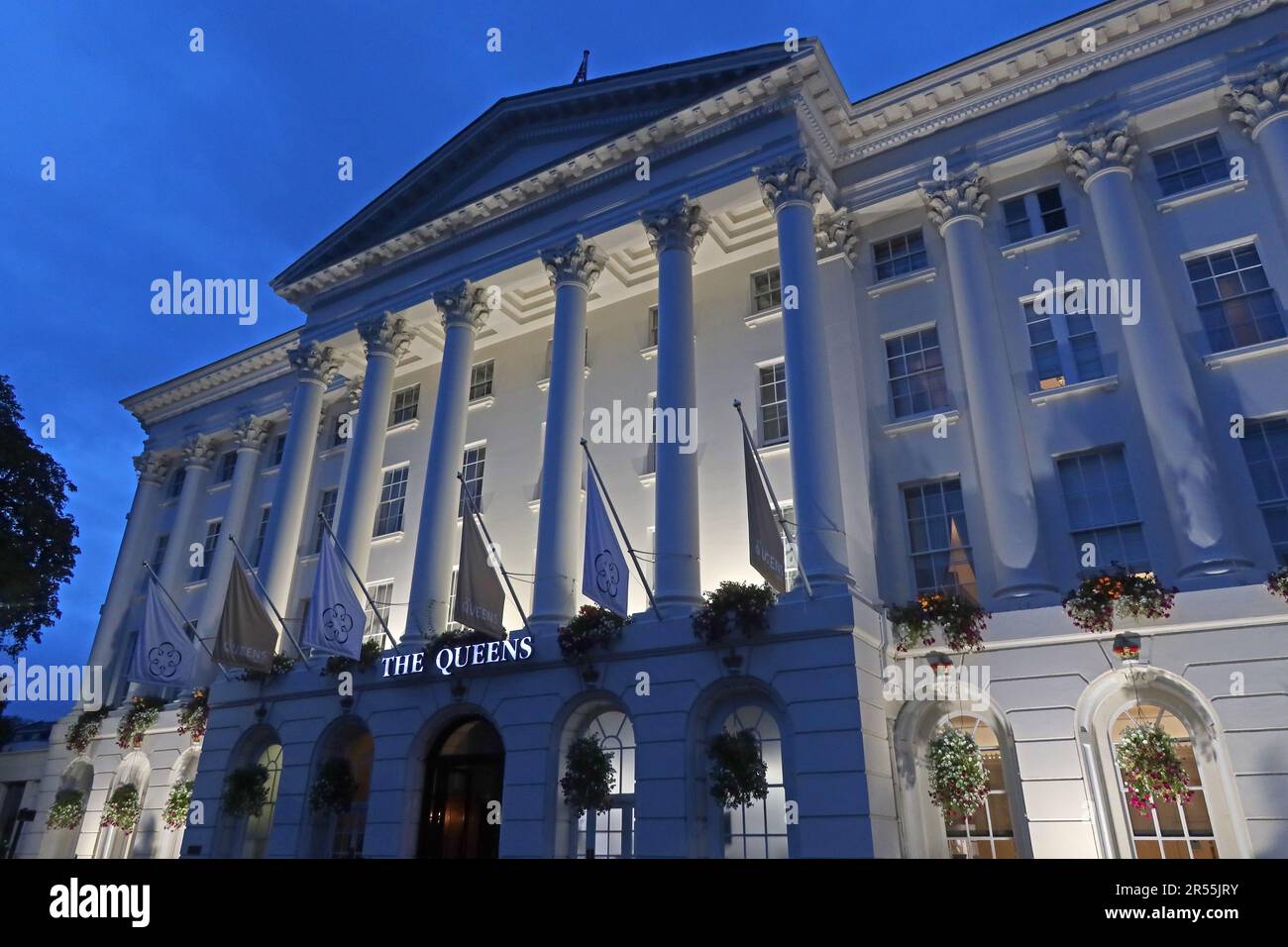The Victorian Queens Hotel at dusk, The Promenade, Cheltenham, Gloucestershire, England, UK, GL50 1NN - opened 1838

Image details
Contributor:
Tony Smith / Alamy Stock PhotoImage ID:
2R55JRYFile size:
57.1 MB (1.8 MB Compressed download)Releases:
Model - no | Property - noDo I need a release?Dimensions:
5472 x 3648 px | 46.3 x 30.9 cm | 18.2 x 12.2 inches | 300dpiDate taken:
4 October 2022Location:
The Promenade, Cheltenham, Gloucestershire, England, UK, GL50 1NNMore information:
One of the first purpose-built hotels in Europe, The Queens Hotel was built on the site of the original Sherborne Spa, and became used as suitable accommodation for the nobility and royalty who visited Cheltenham to restore, renew and revive. Some might say that it was King George III who made Cheltenham the fashionable spa destination that it is today. He spent five weeks in the town to ‘take the waters’ for its medicinal properties and as a result, several more Royal parties came to Cheltenham in the late 18th century, leading to the spa town’s explosion in popularity. As a result of the town’s fame and reputation, Queens transformed itself into a hotel. First opening its doors on the 21st July 1838, and named in honour of Queen Victoria whose coronation fell in the same year, The Queens Hotel Cheltenham was born. Throughout its illustrious history, The Queens Hotel Cheltenham welcomed eminent figures as General Sir Charles Napier, Edward Elgar and Sir Arthur Conan Doyle. It also served as a social refuge for women in WWI and as a military hospital. ARCHITECTURE Following its opening on 21st July 1838, the hotel was declared as ‘one of the noblest buildings of its kind in Europe’. The Queens Hotel Cheltenham is a stunning example of neo-classical architecture, with its imposing white façade of Roman temple scale, adorned by over 50 Corinthian columns, carved cornices and Georgian windows. Also, it is one of a number of imposing landmarks conceived by Robert Jearrad and his brother Charles, who modelled the hotel on the Temple of Jupiter in Rome. Listed as a Grade II English Heritage building since 1955, it retains many of its original features, including historic wallpaper designed by Augustus Pugin, who masterminded the interior of the Palace of Westminster. In recent times the hotel has since been restored to its former neoclassical glory, revitalizing and reimagining the building’s original comforts with the latest technologies,